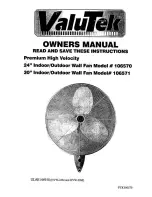
TF7039GB_A_NOT
Page 27 of 48
6.
INTEGRATION IN THE VENTILATION SYSTEM
PIPE CONNECTION
Only suitable ventilation pipes or fittings with the nominal diameter specified on the type plate may be con-
nected to the unit. Ensure a straight minimum inlet distance on the suction side of 3 x connection diameter.
Otherwise, fan performance and noise may be adversely affected.
The enclosed elastic pipe connectors must be used for the installation of the ventilation ducts. In addition to
the existing seal, we recommend sealing with cold-shrink tape. Adhere to the system-related conditions and
specifications of the planner or system constructor.
For the connection to the ventilation duct, an elastic connector must be pushed onto the
pipe connection
of the unit.
Then tighten the
tension locks
until they are tight and seated firmly. The same applies
to the collecting pipe to be connected.
The on-site piping to the pipe connection pieces must be carried out by a qualified installer.
The exhaust air ducts above the roof are protected separately against condensation, weather
influences and wind. The exhaust air ducts must be carried by separate installations and must not
transfer any load to the unit.
COMMISSIONING THE EXHAUST FAN
The exhaust fan must not be commissioned until the installation of the exhaust air ducts, connect-
ing ducts and exhaust air elements, as well as the heating water ducts, has been completed in
full.
The exhaust air must already have the same characteristics as normal room exhaust air when the
unit is commissioned and subsequently operated. Operation with increased dust exposure (e.g.
due to grinding work in the residential buildings) is not permitted.
The service panels and all electrical components must be closed during commissioning. The spe-
cialist commissioning the unit must exclude possible hazards from work carried out on site.
Commissioning must be carried out as follows:
















































